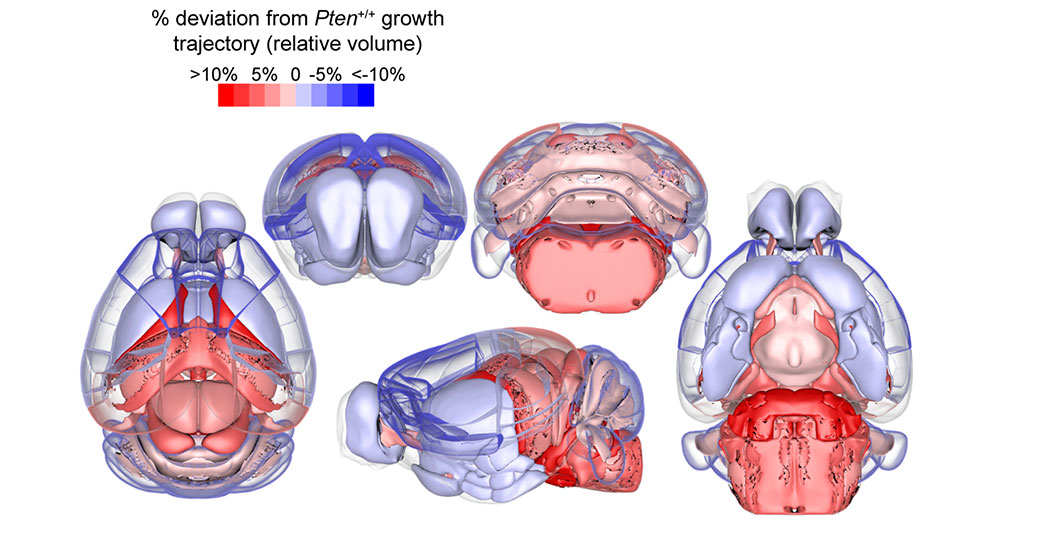Study reveals previously unknown autism-related behavioral deficit

Pten haploinsufficient mice have abnormal rates of growth across brain regions during development. Some regions have relative overgrowth (shown in red) while others relative undergrowth (shown in blue).
For people with autism, overstimulating sensory experiences such as noise can have a profound effect on their lives. Now, a group of scientists at UF Scripps Biomedical Research has shed new light on brain development that can lead to autism-related sensory processing disorders.
The breakthrough is one of the first uses of structural brain imaging to reveal a previously unknown autism-related behavioral deficit, said Damon T. Page, Ph.D., an associate professor in the department of neuroscience. Page and his colleagues used magnetic resonance imaging, or MRI, to assess brain size and development in mice carrying a mutation in an autism-risk gene. The findings were published recently in the journal iScience.
The lower back part of the brain, known as the hindbrain, is crucial for sound and other sensory processing in both mice and humans. Mice with disproportionately overgrown hindbrains were more likely to be startled by noises during lab experiments, the researchers found.
